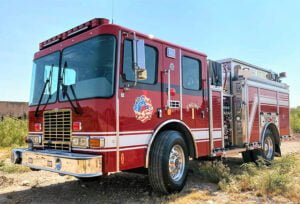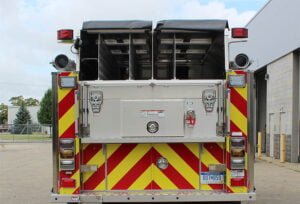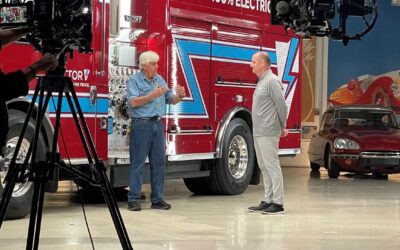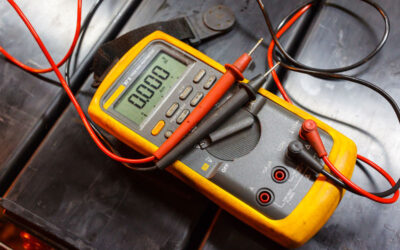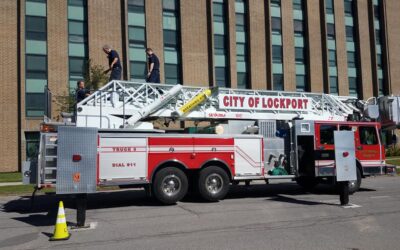By Bill Adams
In the industrial and manufacturing world, standardization is making multiple identical products to lower the cost per unit. The concept is embraced by most fire apparatus manufacturers (OEMs); however, it is detested by all but a very few fire departments and their apparatus purchasing committees (APCs). For unknown reasons, many purchasers in the fire service believe they possess an inherent right and solemn obligation to customize a new apparatus, regardless of cost. After all, who wants to buy the same fire truck as the department the next town over did?
Equally bewildering is why some OEMs and their dealers promote customization as a marketing tool. OEMs readily customize features such as a rig’s overall height and length, front bumper design, compartmentation, pump house and hose bed configuration—albeit at a cost, and often a substantial one. However, it seems like warning lights are installed by OEMs as a complete package that is not to be altered by purchaser or seller.
Packages & Systems
After installing a National Fire Protection Association’s NFPA 1901 Standard for Automotive Fire Apparatus compliant warning light package, most OEMs will eagerly install as many extra warning lights as a purchaser is willing to pay for. But the basic compliant warning light package from a single light manufacturer that is installed by the apparatus OEM usually remains as is. Who says it has to? I cannot find in NFPA 1901 a requirement that all the compliant warning lights on a rig have to be manufactured by just one company. The single-light-manufacturer theory may be vendor-driven.
NFPA 1901 sentence 13.8 Optical Warning Devices states “Each apparatus shall have a system of optical warning devices that meets or exceeds the requirements of this section.” The word system is used throughout the standard. Definitions of a “system” include an organization or an arrangement as well as a method or procedure. NFPA 1901 does not define a warning light system, nor does it say a single light manufacturer shall provide every optical warning light device used to achieve minimum compliance—either compliance in total, per the four lighting zones, or per upper and lower levels in each zone. That requirement is not there.
Warning light and apparatus manufacturers and their respective dealers might be pre-packaging compliant warning lights for marketing and sales purposes. They can claim the package or system is NFPA 1901 compliant for the whole apparatus—of course, when installed according to the lighting manufacturer’s instructions. Prepackaging makes life easy for the vendors; however, it subtly infers purchasers can not use lights from multiple manufacturers in the basic system. That inference is misleading. It is disingenuous for vendors to say all lights must be from one manufacturer.
Compliance
Who certifies a rig’s warning lights are NFPA compliant? The apparatus manufacturer does by “demonstrating” compliance. My understanding of that statement is the apparatus manufacturer has to show that someone responsible has tested and certified the test results.
(Underlining is mine for emphasis.) NFPA 1901 paragraph 13.8.16* Compliance Documentation states: “The apparatus manufacturer shall demonstrate compliance of the warning system by one of the following methods:
(1) Certification that the system was installed within the geometric parameters specified by the manufacturer of the system referencing the optical source test reports provided by the manufacturer of the system.
(2) Certification that a mathematical calculation based on test reports for individual optical sources provided by the manufacturer of the devices and performed by a qualified person demonstrates that the combination of individual devices as installed meets the requirements of this standard.
(3) Actual measurement of the lighting system after installation on the apparatus.”
My interpretation of Paragraph (2) above is that the apparatus manufacturer can show that the lights installed have been individually tested and the combination of lights meets the standard; it does NOT say the lights have to be manufactured by one company only. There is a misconception in the fire service that if NFPA 1901 does not specifically state you can do something, then you can’t do it. That is reading between the lines.
Substantiation
(Again, underlining is mine for emphasis.) Each warning light has to be tested per NFPA 1901 sentence 13.8.15.2.1.1: “All optical warning devices shall be tested to the requirements of SAE J595, Directional Flashing Optical Warning Devices for Authorized Emergency, Maintenance, and Service Vehicles; SAE J845, Optical Warning Devices for Authorized Emergency, Maintenance, and Service Vehicles; or SAE J1889, L.E.D. Signal and Marking Lighting Devices.”
And the test results must be made available per NFPA 1901 sentence 13.8.15.2.1.1: “The results of the testing shall be used to determine compliance with this standard, and all required photometric data shall be available, upon request, from the optical warning device manufacturer.”
How to Certify?
NFPA 1901 requires certification but it does not specify how to “show” certification to the purchaser. Will just a letter stating certification from the apparatus OEM work? Does merely checking yes on a proposal’s “Bidder Complies” column suffice? What should a purchaser look for in the delivery papers when taking delivery of a new apparatus?
Does certification require the make and model number for each light provided? Are the actual test results (raw data) necessary? Is separate certification necessary for the upper and lower levels of each of the four coverage zones or will one for the whole apparatus be good enough?
Go for It
NFPA 1901 does not prevent or restrict purchasers from developing their own unique compliant lighting packages with lights from multiple lighting manufacturers. As long as the apparatus OEM provides lights that are “certified” compliant by the warning light manufacturer if installed within the parameters of the light manufacturer, then everyone should be happy. This narration is NOT proposing something new and revolutionary. The accompanying photographs show a rig with “certified” Zone A front and Zone C rear lighting. Each zone has lights from two different manufacturers.
